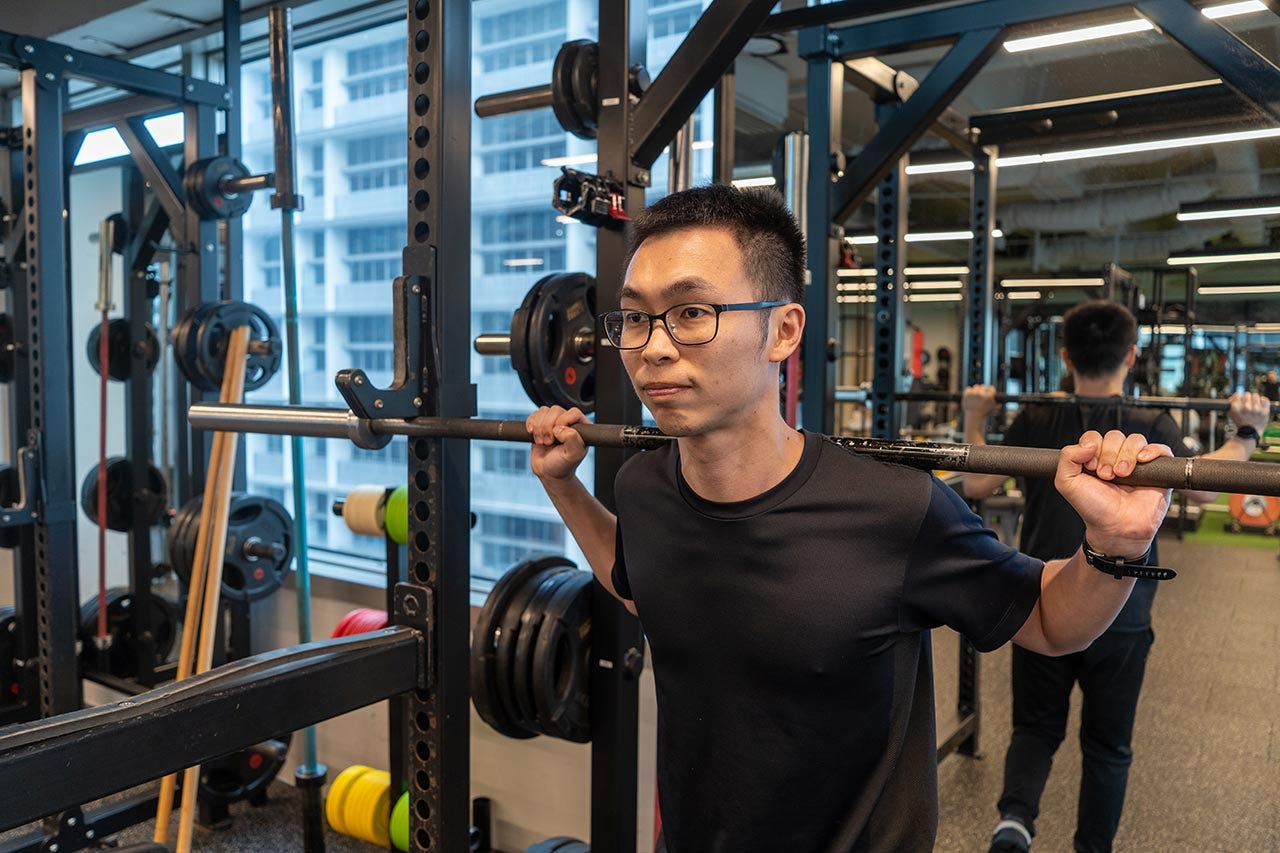Three Unique Reasons Why Runners Should Do Isometrics
Unmatched isometric benefits for runners.
Here are three reasons why runners should do isometric exercises:
Improve running economy and performance
Enhance tendon health
Build angle-specific strength
Quick Introduction to Isometrics
There are two main groups of isometrics, i.e. exertions without movements.
Yielding isometrics
Overcoming isometrics
Yielding isometrics involve holding a position against resistance, e.g. planks.
Overcoming isometrics involves pushing or pulling against an immovable object, such as pushing against a wall.
Both types of isometrics produce unique benefits, as mentioned below.
1. Improve Running Economy and Performance
Running economy is the energy required to maintain a specific pace.
Alongside threshold levels and VO2 max, isometric strength is one of three key factors affecting running performance, and isometric exercises have shown significant benefits in this area.
For instance, recent research demonstrated that both isometric strength training and plyometric training improved 2.4-kilometer run times and maximal aerobic speed in endurance runners. However, only isometric strength training improved running economy.
This is aligned with older studies, which reported an improvement in running economy (~4–7%) after isometric plantar flexor strength training.
I spoke to the principal researcher of the latest study in a podcast. Here’s the relevant snippet (from 36:33 onwards):
In summary, Danny Lum, PhD, explained that:
isometrics improves running economy by inducing tendon adaptions
plyometrics induces muscular adaptations that improves running
Both are important for runners and they provide specific adaptations.
This bring me to my next point on tendon health.
2. Enhance Tendon Health
Runner injury prevalence was found to be at 44.6% ± 18.4% in a recent systematic overview.
These injuries include tendon-related ones.
For instance, studies indicate that Achilles tendon pain affects up to 22% of recreational runners, and the overall prevalence of patellar tendinopathy in the sport-active population is 18.3%.
A possible solution is isometrics.
In a 2001 study, researchers found that a 12-week isometric training protocol (70% maximal voluntary contraction, 20-second holds) increased tendon stiffness by 57% in the quadriceps tendon, as measured via ultrasonography.
Other studies have also found an increase in tendon stiffness of 36-54% through a protocol of five sets of four isometric contractions, each at 90% maximum voluntary contraction.
This enhanced stiffness reflects improved force transmission capacity and reduced energy loss during muscle contraction, contributing to more efficient movement patterns and potentially reduced injury risk.
Isometric exercise also appears to be particularly effective at stimulating collagen synthesis, the fundamental process underlying tendon adaptation and repair.
When compared to isotonic exercises, isometrics are found to be equally beneficial for tendon health. It does, however, come with unique benefits, such as reduced mechanical loading, which can be helpful for runners.
On the whole, research consistently shows that isometric training protocols can:
increase tendon stiffness by more than 50%
enhance collagen synthesis
provide pain relief in tendinopathies
3. Build Angle-Specific Strength
Isometric training produces the greatest strength gains at that specific training angle.
With this knowledge, Alex Natera, PhD, developed a series of isometric testing and training programmes specific to runners’ mid stance position in 2017.
It includes protocols focused on hips, knees, and ankles.
Over the years, better data collection and wider adoption has enabled strength baselines to be established via these protocols, to help runners stay injury free.
I discussed the protocols in the following video (go straight to 4:43 to see the assessments):
In gist, isometrics are uniquely advantageous for addressing specific weaknesses or sticking points in dynamic movements.
The hip/knee/ankle tests addresses those in running - where maximal loading happens when the foot is in contact with the ground.
Conclusion
Isometric exercises offer unique benefits that complement traditional running training and other forms of strength training.
If you would like to learn more about such exercises, my team conducts isometric train-the-trainer workshops on top of including isometrics in our testing and training services.
Please contact us if you would like more information.
References
Clifford, C., Challoumas, D., Paul, L., Syme, G., & Millar, N. L. (2020). Effectiveness of isometric exercise in the management of tendinopathy: a systematic review and meta-analysis of randomised trials. BMJ Open Sport & Exercise Medicine, 6(1), e000760. https://doi.org/10.1136/bmjsem-2020-000760
Kakouris, N., Yener, N., & Fong, D. T. (2021). A systematic review of running-related musculoskeletal injuries in runners. Journal of Sport and Health Science/Journal of Sport and Health Science, 10(5), 513–522. https://doi.org/10.1016/j.jshs.2021.04.001
Kubo, K., Kanehisa, H., Ito, M., & Fukunaga, T. (2001). Effects of isometric training on the elasticity of human tendon structures in vivo. Journal of Applied Physiology, 91(1), 26–32. https://doi.org/10.1152/jappl.2001.91.1.26
Lanza, M. B., Balshaw, T. G., & Folland, J. P. (2019). Is the joint-angle specificity of isometric resistance training real? And if so, does it have a neural basis? European Journal of Applied Physiology, 119(11–12), 2465–2476. https://doi.org/10.1007/s00421-019-04229-z
Skypala, J., Hamill, J., Sebera, M., Elavsky, S., Monte, A., & Jandacka, D. (2023). Running-Related Achilles Tendon Injury: A prospective biomechanical study in recreational runners. Journal of Applied Biomechanics, 39(4), 237–245. https://doi.org/10.1123/jab.2022-0221
Šuc, A., Šarko, P., Pleša, J., & Kozinc, Ž. (2022). Resistance Exercise for improving running economy and running biomechanics and Decreasing Running-Related Injury Risk: A Narrative Review. Sports, 10(7), 98. https://doi.org/10.3390/sports10070098
Tsai, M., Domroes, T., Pentidis, N., Koschinski, S., Schroll, A., Bohm, S., Arampatzis, A., & Mersmann, F. (2024). Effect of the temporal coordination and volume of cyclic mechanical loading on human Achilles tendon adaptation in men. Scientific Reports, 14(1). https://doi.org/10.1038/s41598-024-56840-6

